2019 Hyundai Santa Fe Review
KANANASKIS, Alberta – The smoke casts an eerie pall through which the sun glows with the dim muster of a 60-watt bulb. The fallout from more than 500 out-of-control B.C. wildfires, the noxious haze has virtually obliterated the horizon – the Kananaskis mountains reduced to a faint outline above the apocalyptic landscape.
If there’s one thing that remains perfectly clear, however, it’s that the vehicle we’re driving is very good. Sleeker, more luxurious, and boasting a substantial roster of safety technology, the all-new, fourth-generation Hyundai Santa Fe arrives for 2019 as a five-seat model replacing the former Santa Fe Sport. The larger seven-seat Santa Fe XL will be phased out and replaced with an entirely new crossover by 2020 (it’s rumored to be called the Palisade).
Hyundai considers the Santa Fe to be the flagship of its rapidly growing crossover lineup; a vehicle that handily straddles the line between compact and mid-size, and with equal measures of practicality and comfort. Re-imagining a bread-and-butter vehicle with such a wide and profitable demographic is no easy task; while it’s important to improve and elevate a badge so that it attracts new buyers, making it too aspirational runs the risk of alienating the very core that’s responsible for its success.
An Upscale New Look
FAST FACTS
| Engines: | 2.4L 4-cylinder/2.0L turbo 4-cylinder |
| Output: | 185 hp, 178 lb-ft/235 hp, 260 lb-ft |
| Transmission: | 8-speed automatic |
| US Fuel Economy (MPG): | 25 combined (FWD/2.4L), 21 combined (AWD/2.0L) |
| CAN Fuel Economy (L/100 km): | 9.6 combined (FWD/ 2.4L), 11.2 combined (AWD/2.0L) |
| US Price: | $25,500 to $37,100 |
| CAN Price: | $28,999 to $44,999 |
At first glance, the Santa Fe’s new styling isn’t a huge departure from the previous model’s. Based on the new Kona crossover’s design language, it features deeply sculpted side character lines, large, muscular wheel arches, lower and wider rear fascia, and the new familial “3D Honeycomb Cascading” grille. Hood meets grille in a brushed metal chrome bar, flanked by Jeep Cherokee-like gun-slit LED daytime running lights. They’re stacked on top of standard projector beam headlights (LED in top trim levels) that feature channels to increase airflow. Overall aerodynamic improvements result in a coefficient of drag of 0.337.
ALSO SEE: 2019 Subaru Forester Review
The Santa Fe is underpinned by the Kia Sorento platform, with a 108.9-inch (2,765-mm) wheelbase that’s 2.4 inches (65 mm) longer than the one it replaces. Constructed of 67% high-strength steel, the lighter platform increases torsional rigidity by 15% for better safety, and a more secure, planted ride.
Airy, Swanky Cabin
The outgoing Santa Fe’s cabin impressed buyers with its comfort and long list of extra features. But its chrome-embellished design was looking dated.
The first thing that impressed us with the new cabin is how open and airy it appears. If the last iteration was criticized for rear visibility, the new Santa Fe has a good view from every angle. Larger rear side windows and a huge panoramic sunroof help increase open up the rear passenger compartment and add light. Forward visibility is very good too, thanks to A-pillars that have been angled to present their narrowest side to the driver, and side mirrors that are mounted on the door instead of creating a large blind spot.
The cabin’s design is also lighter and less fussy. Swooping lines give way to stacked shapes in contrasting colors, and soft-touch materials are finished in a variety of textures and augmented with brushed metal trim. Even plastic surfaces are given a more premium look; for example, the door panels are upholstered with a perforated vinyl that’s finished in a wavy, shirred pattern.
The center stack has been simplified and is now topped with a seven or eight-inch, floating display screen. Only the upper trim levels equipped with the eight-inch screen receive navigation, other trims have to make do with Apple CarPlay or Android Auto. Switchgear is blessedly simple compared with the complexity of some competitors interfaces.
New Safety Tech
There’s a host of active and passive safety technology available within Hyundai’s “Smart Sense” driver assist package. These include Head-up Display, an industry-first “Safety Exit Assist” that works for up to 10 minutes after the car is shut off, by locking doors and prevent passengers from exiting if an approaching vehicle is sensed. Rear occupant alert lets the driver know if there is someone still in the rear seat when exiting; and Rear Cross Traffic Collision Avoidance Assist sounds an alert and applies the brakes when backing up if another vehicle is approaching. Available five-year complimentary BlueLink Telematics allows remote diagnostics, remote care, access, remote start with climate control, and Find My Car.
ALSO SEE: 2018 Hyundai Kona Review
New Engines, Better Driving Dynamics
There are two engine choices for now: the returning 2.4L four-cylinder with 185 hp and 178 lb-ft of torque, and an updated 2.0L turbocharged four-cylinder producing 235 hp and 260 lb-ft of torque @ 1,450-3,500 rpm. A diesel option is slated to arrive later. Both choices come with a brand-new eight-speed automatic transmission, and all but the base model come with HTRAC variable torque control all-wheel-drive.
Over the winding roads of the Kananaskis foothills, the Santa Fe’s chassis improvements and upgraded sound deadening are immediately apparent. This is a very quiet and solid performer. The engine is fairly quiet even when pushed hard, and the transmission, for the most part, displays quick clean shifts – there are no paddle shifters for those who’d rather do it themselves. There’s a bit of hesitation moving off from stop lights, particularly with the turbocharged engine, but it’s fine at highway speeds.
Formerly light and a bit wobbly, the steering been upgraded with increased gear ratios and stiffer torsion bar and is now more responsive and just the right heft. The chassis stayed composed over washboard pavement and the suspension comfortably soaked up the worst of it without permitting any body roll. The torque distribution system helped keep the corners flat and stable even on loose gravel. There are three selectable drive modes: Eco, Comfort, and Sport, which alter shift, throttle and steering responsiveness; and power distribution for the all-wheel-drive system. In Sport Mode, the Santa Fe is quick and responsive with a little added heft to its steering and the majority of the torque coming from the rear wheels.
The Verdict: 2019 Hyundai Santa Fe Review
It’s really hard to find fault with the new 2019 Hyundai Santa Fe. It’s not really an exciting vehicle, but it’s agile, handles very well, falls about mid-pack for cargo space, and offers more features than most of its competitors. It might win some new fans with its upscale new style and interior design, as well as a rich lineup of safety tech and driver assistants.
Discuss this article on our Hyundai Santa Fe Forum
LOVE IT
- Visibility is terrific
- Interior styling sleek and unfussy
- Connectivity interface is blessedly simple
LEAVE IT
- Some of the interior colours are a bit drab
- Only the top spec trims get navigation
- Base engine a bit underpowered
More by Lesley Wimbush



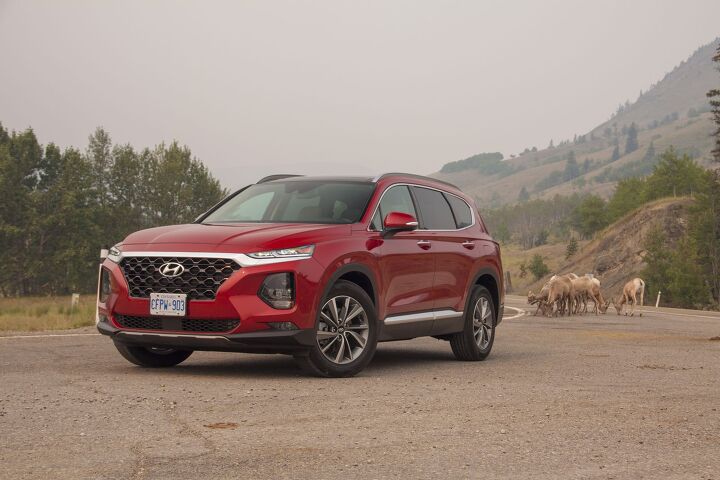
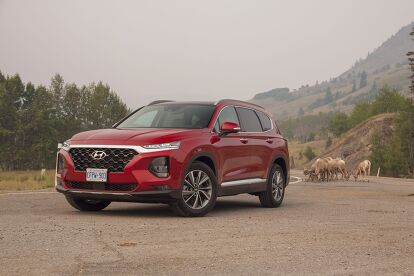





































































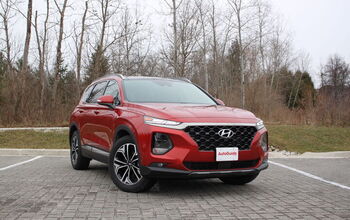
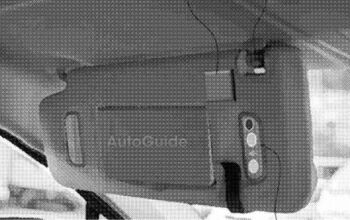

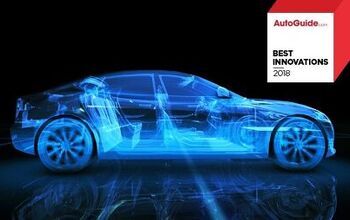
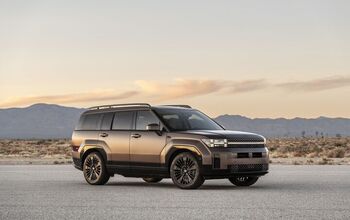
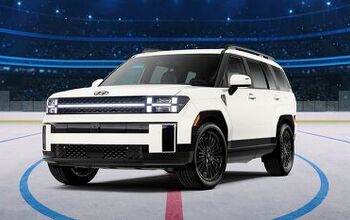

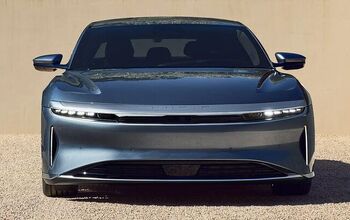

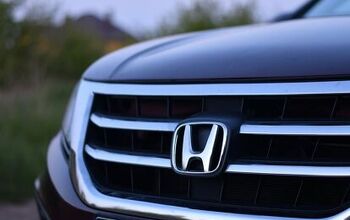
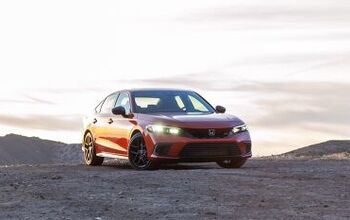
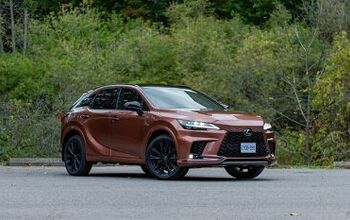
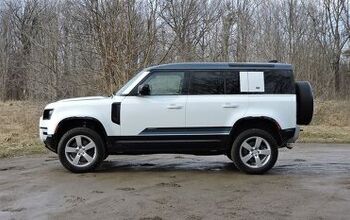


Comments
Join the conversation
They all look alike these days; the best thing is to look for the handling, power and available features that the buyer needs or wants. And a great warranty.
I drive a 2019 Santa Fe, purchased for it's safety rating - talk about falling for some false advertisement. The vehicle STOPS MOVING while I'm in the middle of driving. In the middle of traffic. It's happened 5 times and Hyundai can't be bothered to remedy this. It looks like a nice car, the commercials are effectively orchestrated. It's just to bad Hyundai creates death traps for vehicles, lacks accountability for their production flaws, and falsely advertises "safety" as a value and priority. #DontBuyHyundai